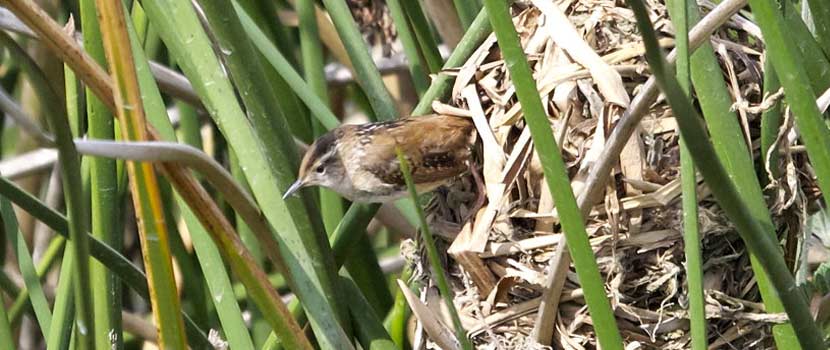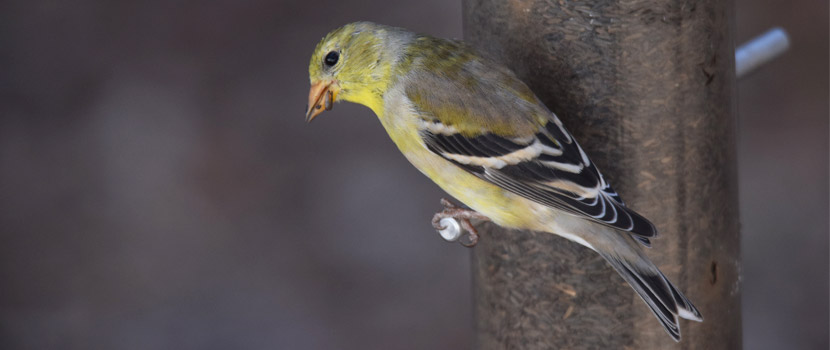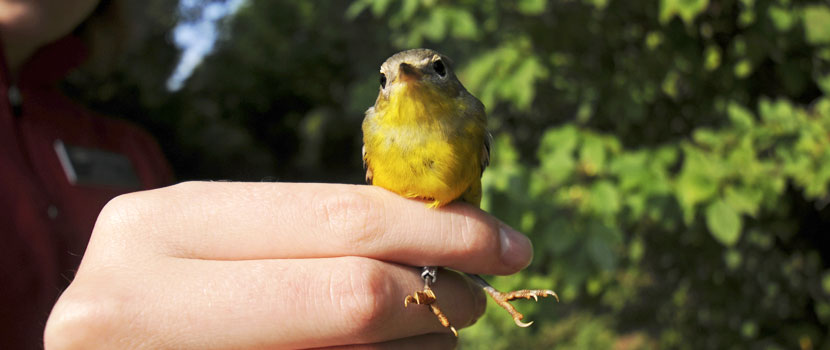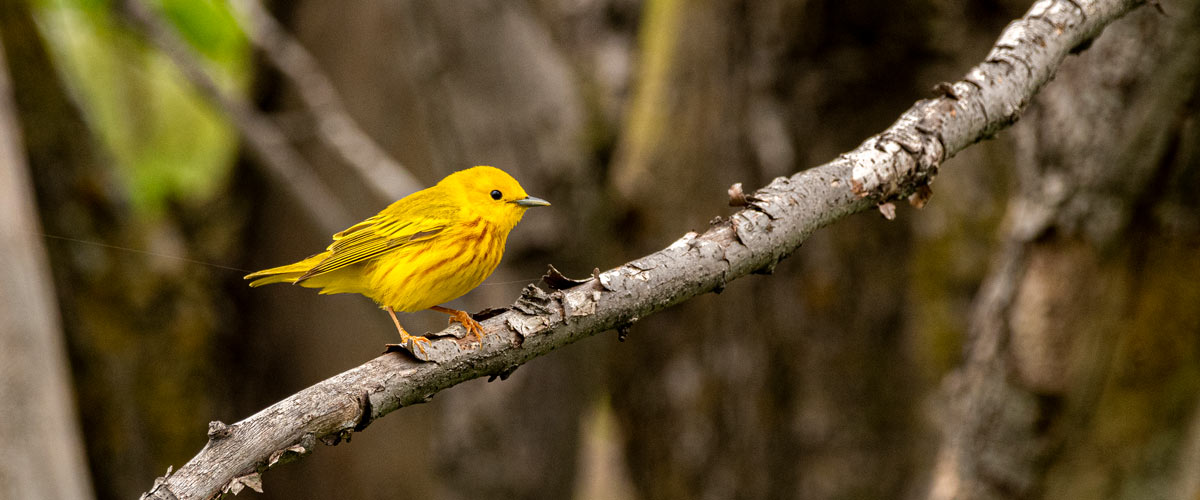
2022: Three Rivers Parks’ Big Year of Birds
By: John Moriarty
January 05, 2022
Category: Big Year of Birds
It’s a new year, and, in 2022, Three Rivers Park District will be celebrating birds each and every month.
With our Big Year of Birds, we’re highlighting a variety of opportunities for you to learn more about birds and the role they play in our ecosystems, get started with birding (or challenge yourself to become a more expert birder), and find out how Three Rivers makes habitats that encourage birds to keep returning.
Birds are an important part of Three Rivers. The numerous species seen in our parks (more than 280!) draw in park users, many often specifically looking for birds, especially uncommon species. The majority of park visitors will casually observe birds and are thrilled when they spot trumpeter swans, bald eagles or other large iconic birds. Many times, it is the common and easily seen species that can get someone excited about birds, such as watching black-capped chickadees at a feeder or mallards swimming along the pond edge. Three Rivers has provided bird-watching opportunities for all levels of interest for many years.
Not only are birds an important way for park users to connect with nature, but they are critical to maintaining a vibrant ecosystem. Because of this, bird habitat management and restoration are key priorities for Three Rivers Wildlife Section.
Habitat Management
More than 280 different species of birds have been seen in our parks. One-hundred-and-thirty-four species have nested here and 54 species live in the parks year-round. Birds use a variety of habitats from forests and prairies to wetlands and lakes in the parks. Each habitat has rare and unusual species that we monitor to make sure our habitat management is beneficial to the birds so that they want to live there.
For some species, that includes nesting structures. Birds like Eastern bluebirds, purple martins and wood ducks nest in natural cavities. We provide with nest boxes as substitutes for those spaces. Ospreys nest on top of dead trees, so we provide nest platforms on top of telephone poles to mimic those trees.
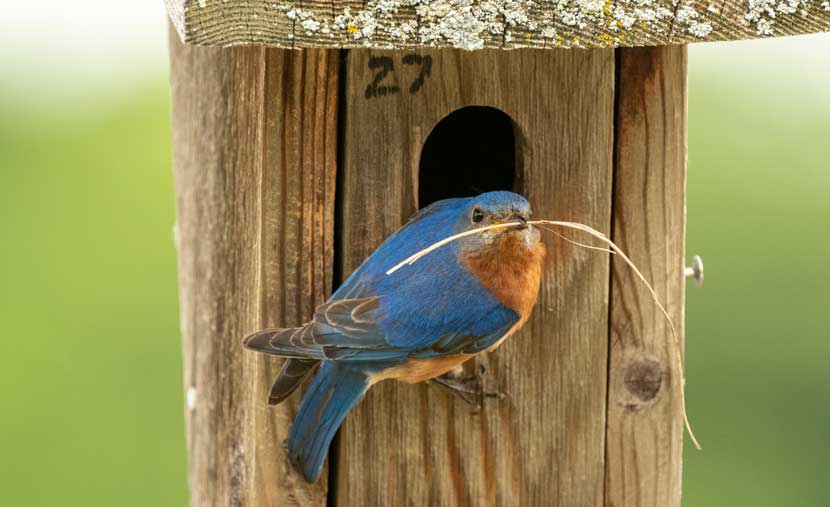
Bringing Back Birds
Worldwide, hundreds of bird species are now extinct because of human activity. In Minnesota, several species of birds were eliminated by overconsumption or habitat loss. Part of wildlife management includes reintroducing native species to Three Rivers.
In the early 1960s, Canada geese and mallards were raised and released from a number of the park reserves. Both reintroductions have been very successful.
Our longest reintroduction program was for trumpeter swans. The first birds were brought to the parks in the mid-1960s and we maintained a captive breeding and feeding program until 2010. Trumpeter swans are now found throughout the state because of both our and the Minnesota Department of Natural Resource’s program.
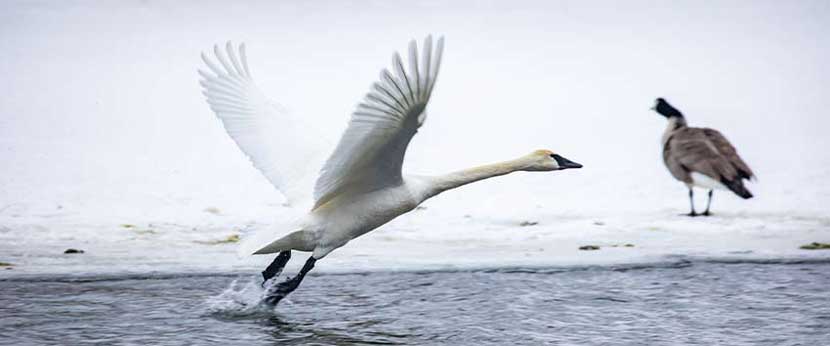
Most recently, we reintroduced the osprey. During the 1980s, osprey chicks were collected in northern Minnesota and raised in hack towers at Carver Park Reserve. There are now more than 120 nests in the metro — and that number is still growing.
What’s Happening this Year
Whether you’re an experienced birder or someone who has just begun to spot the differences between different bird species, there are a variety of events throughout the year for people of any interest in birds.
Each month, you can choose from an array of activities, from intro-to-birds programs to expert talks about birds to family bird hikes. For the more serious birder, we’ll also have Big Day and Big Year events. These events are when teams of birders try to find as many bird species possible in Three Rivers Parks in one day (12 hours) or the number of species while staying in one location for 12 hours.
Our signature event will be the World Migratory Bird Day Festival on Saturday, May 14, at Eastman Nature Center in Elm Creek Park Reserve. This free festival will have live bird displays, art activities, bird hikes for all levels, binocular and phone app demonstrations, booths from other bird related groups, and much more.
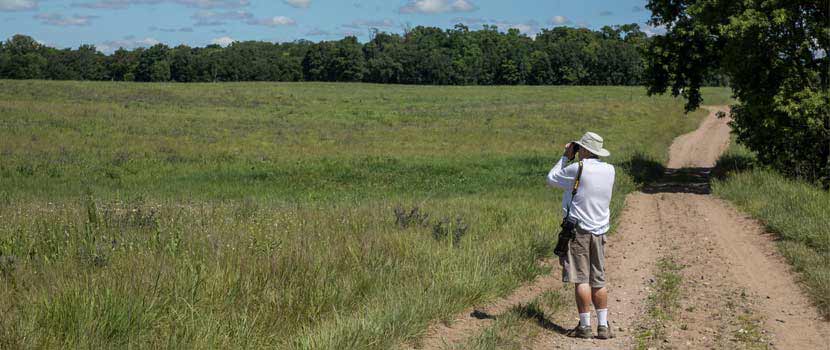
A calendar of all the events, programs, and walks across the Park District can be found on the Big Year of Birds webpage. The page also includes checklists, staff-recommended bird-watching sites, eBird sightings within Three Rivers, and other information on the birds in our parks and in Minnesota.
Some of the important dates from the calendar are listed below. New events will be added each month, so watch the webpage for more.
Big Year of Birds Speaker Series
The speaker series takes place on select Sundays at Silverwood Park (Visitor Center, Great Hall) from 3-4 PM. Register for upcoming sessions.
- January 16: Bird Conservation and Introductions at Three Rivers
John Moriarty, Senior Wildlife Manager Three Rivers Park District - January 30: Smartphone Birding
Sharon Stiteler, ‘The Bird Chick’ - February 13: Minnesota’s Breeding Bird Atlas, Changes Over 75 Years
Lee Pfannmuler, Author/Ornithologist - February 27: Biography of T.S. Roberts, Historical Birding
Sue Leaf, Author - March 13: Bird Photography
Siah St. Clair, Photographer - March 27: Birds of Costa Rica — Our Birds/Their Birds
Carrol Henderson, Minnesota Department of Natural Resources, retired
World Migratory Bird Day Festival
Celebrate World Migratory Bird Day with us on May 14 from 7 AM to 5 PM at Eastman Nature Center.
- Join in bird hikes for all abilities
- Meet Birds of Prey
- Try out binoculars and improve your skills
- Explore digital resources to assist with bird identification
- And more feathery activities!
Check the webpage for all of the details.
Big Count Events
Join special bird counting activities throughout the park district the entire year.
- June 11: Big Sit
Count and identify as many different kinds of birds as you can while staying in one location for 12 hours. - September 10: Big Day
See how many different kinds of birds you see in 12 hours within the park district. - All year long, with a December 10 check-in: Big Year
How many different species of birds can you see in the park district during 2022.
About the Author
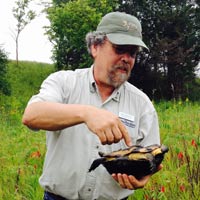
John Moriarty is the Senior Manager of Wildlife at Three Rivers Park District and has been with the Park District for 15 years. He has been involved in many of the wildlife restoration efforts and initiated the snake and butterfly efforts. John has led several projects to increase prairie habitat in the Park District. John likes exploring natural areas and looking for all types of plants and animals, but especially turtles.
Related Blog Posts
Nesting Birds of Three Rivers
By: Steven Hogg
Three Rivers is home to more than 100 different nesting birds. From tree nesters to wetland dwellers, learn where and how some of these birds build their nests.
The Joy of Backyard Birding
By: Erin Korsmo
Keeping bird feeders is a rewarding experience. Read on to learn why you should consider keeping feeders and how to get started at home.
Nature's Classroom for 50 Years: Bird Banding at Lowry Nature Center
By: Allison Neaton
Lowry Nature Center is known for its diverse population of bird species and longtime tradition of bird banding. Learn more about bird banding, what naturalists found out about American tree sparrows, and why banding birds is important for nature education.
